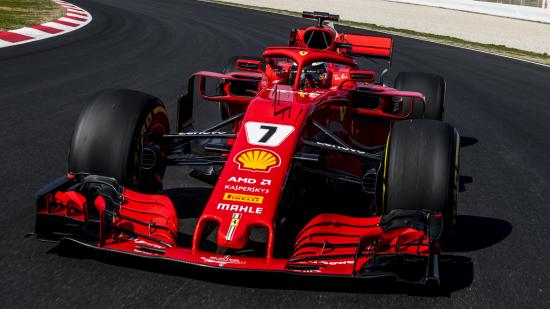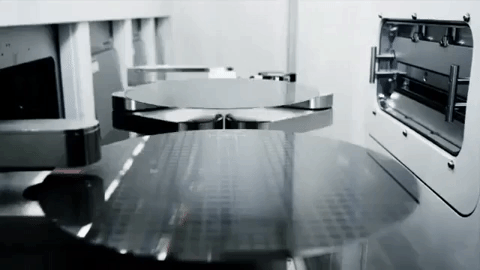AMD and the Mercedes-AMG Petronas F1 team have announced a multi-year partnership, effectively putting an end to years of Ferrari Formula One friendship. So it sounds like a good time to look back on the company’s decades-old relationship with the Prancing Horse, and how it once helped AMD keep the money-hungry wolves from the door.
It’s not been an easy ride for the Silicon Valley startup during its 50-year history. As former AMD CEO Hector Ruiz (2002 – 2008) would later remark, AMD was ever-so-close to financial collapse on many occasions. And few as catastrophic as the one AMD was facing leading up to divesting its manufacturing arm – later to become GlobalFoundries.
Suffering through Intel’s Core resurgence, AMD managed to net itself a deal to sell its manufacturing arm to a state-owned Abu Dhabi investment company through a rather unexpected channel: the son of a famous automobile manufacturer, Piero Ferrari. Or at least that’s how Hector Ruiz tells it in his book: AMD’s Fight to Free an Industry from the Ruthless Grip of Intel, Greenleaf Book Group Press (2013).
I’ll admit, the book is a little grandiose at times, but how often do you get a first-hand account of what went down within these secretive Silicon Valley companies? At least it’s a useful source about how AMD’s execs saw their own actions and its position in the market.
Going into 2007 AMD was under financial strain. The company had recently purchased graphics expert ATI for $5.4bn, and Intel was finally managing to match its Athlon and Opteron CPUs in the processor market with its Core branded products. As Ruiz tells it, “the survival of AMD was at stake.”
But AMD’s execs had a plan to deal with the pressure. Rather than keep pumping money into its massively expensive fab facilities – founder and CEO Jerry Sanders had demanded AMD invest heavily into fabs during his tenure – the company would search for ways to shed its manufacturing arm and go fabless. As ATI and Nvidia had recently, and successfully, demonstrated.
An opportunity then arose with Abu Dhabi investment company, Mubadala Development. AMD had first sought a simple investment from the company, but talks had slowly moved toward something more.
“Why not sell them all our factories?” Ruiz claims to have told Giuliano Meroni, head of AMD EMEA. “Think about it: Why are we carrying this debt load? Why are we still as vertically integrated as we are, when it’s not serving us well? Say we do a joint venture on manufacturing. AMD breaks free from a business model we can’t really afford, and Abu Dhabi gets valuable technology assets that it doesn’t have – that no one in the region has. It’ll work.”
AMD’s board of directors was still apprehensive, but Ruiz had decided the plan was the best course of action. And, the way he describes it, AMD had no other choice.
Meroni would struggle to get Abu Dhabi’s attention, however. The Crown Prince was too busy to entertain the business proposal and AMD wasn’t getting anywhere. It wasn’t until one evening where Meroni was dining at Ristorante Cavallino – the Ferrari heir’s own restaurant – that opportunity would strike. Ferrari knew the Crown Prince personally, and so he set up a meeting between two of Mubadala’s VPs and AMD.
Congratulations @ScuderiaFerrari, #kimi7 and #seb5. We are super proud of the way you fought today for the win! Fantastic afternoon with our @AMD friends and partners at the #AustinGP 😎 pic.twitter.com/UYh69nXa5z
— Lisa Su (@LisaSu) October 21, 2018
Turns out, Abu Dhabi had recently bought a 5% stake in Ferrari. AMD sponsored Ferrari’s F1 team, as it does today, and the unlikely connection allowed AMD a pass right into the investment firm’s inner circle.
“When Giuliano relayed his story to me,” Ruiz says. “he kept repeating, ‘È un miracolo.’ I didn’t know about a ‘miracle,’ but the link through Piero Ferrari did sound like serendipity, a true blessing, and it reinforced something I had long suspected: Relationships really are all-important in business as in life.”
It would take some time to finalise, but AMD’s execs managed to close the deal in Palo Alto in 2008. AMD was under significant pressure to finalise the deal, it had, after all, reported its seventh consecutive quarterly loss – some $1.2bn – that July. Ruiz claims to have sold Abu Dhabi on the idea that there were other players in the game. That had cranked up the pressure enough that eventually both companies agreed to the terms.
The deal, announced on October 7, 2008, would create “The Foundry Company,” later known as GlobalFoundries. It was worth nearly $5bn from the get-go, backed as it was by Mubadala Development and the newly-created ATIC, or Advanced Technology Investment Company. The deal would see AMD itself offload $1.2bn in debt and walk away with over $1bn in cash. Its annual cash flow went from losing $1bn to generating $600 million nearly overnight, saving it from financial ruin.

